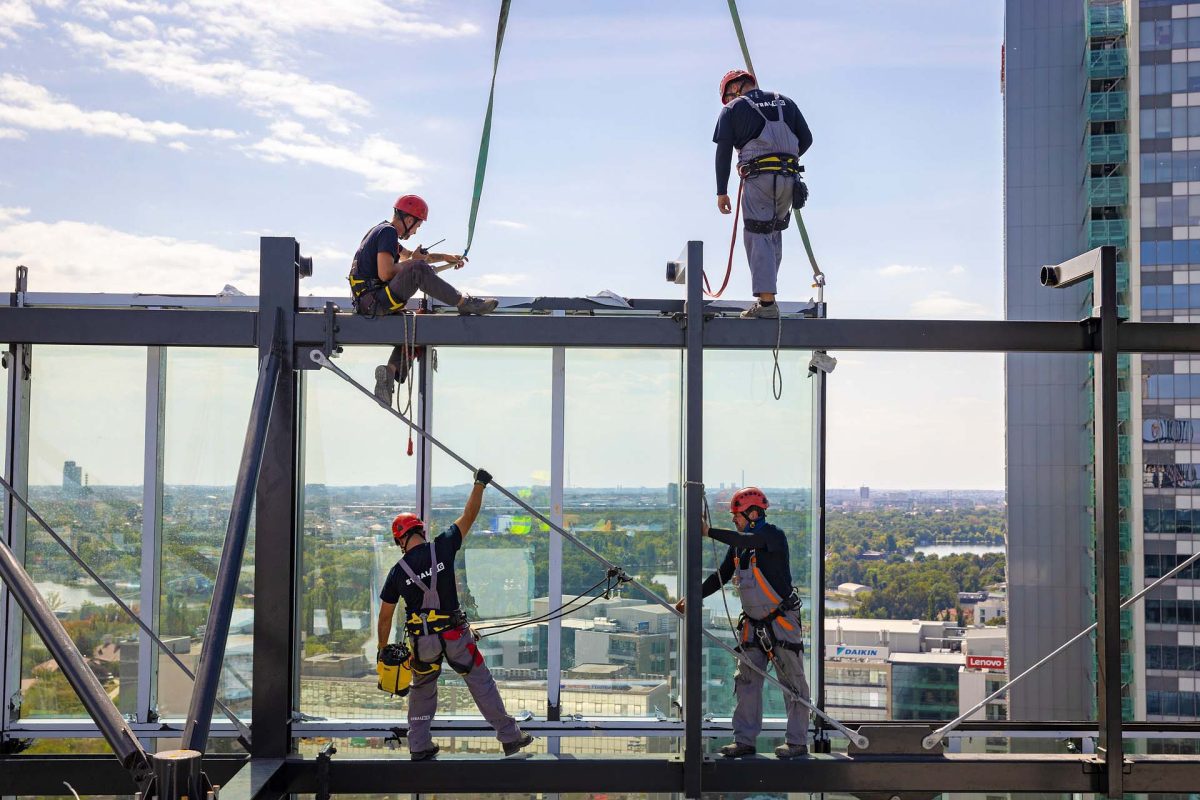Safety culture on construction sites in the UAE has seen remarkable improvements over the past decade, but experts emphasize that ongoing vigilance and effort are crucial to maintaining these standards. Stian Overdahl reports on this evolution.
In the early 2000s, rapid development in the Gulf construction sector often sidelined safety considerations. However, recent years have witnessed a significant shift. Rebecca Kelly, a lawyer with Morgan Lewis, who has over 12 years of experience in health, safety, and environment (HSE) within the GCC, notes a “substantial decrease in the number of accidents and fatalities” compared to when she first began her practice.
Several factors contribute to this positive trend, including a reduction in active projects and companies. However, the introduction of stringent safety regulations, issued in Dubai in 2008 and Abu Dhabi in 2009, has had a profound impact. While other high-risk sectors in the UAE have specialized safety regulations, construction remains governed at the emirate level. Kelly has personally observed a notable decline in fatalities due to these regulations, although no official statistics are available.
Many international construction firms operating in the Gulf adhere to best practices developed in their home markets, such as the UK or Australia, to comply with local requirements. Kelly highlights that these international guidelines align closely with UAE regulations, promoting worker protection. “Most construction companies are focused on compliance, always asking how to protect their workers,” she asserts.
Non-compliance with safety regulations carries serious consequences, especially in the event of a fatal accident. The authorities typically hold an investigation to determine responsibility, with findings of negligence potentially leading to prison sentences of up to five years. This looming threat acts as a significant deterrent against non-compliance, according to Kelly. Responsibility for negligence can fall on individual workers or management, depending on the presence of proper operating procedures on-site.
After any accident—whether due to negligence or not—companies must demonstrate compliance with the law. Kelly emphasizes that workers’ understanding of safety obligations is crucial, particularly in the immediate aftermath of an incident. This proactive approach can significantly influence the legal outcomes of investigations.
Beyond accidents, the costs associated with non-compliance can be substantial, including work stoppages and prolonged investigations that can last years. Kelly insists that safety should not rest solely with contractors; it must be a shared responsibility among everyone present on a construction site.
Daniel Griffiths, general manager of Kee Safety LLC, a provider of personal and collective protective equipment, notes an intensified focus on site safety in the UAE, particularly in Dubai, over the past 18 months. With falls from heights being the leading cause of fatalities on construction sites, Kee Safety offers products designed to minimize human error, such as guard rails and edge protection systems.
The diverse labor force in the GCC, often comprising individuals with varying languages and cultural understandings of safety, presents additional challenges. Griffiths indicates that using instructional videos in training helps bridge these language gaps effectively.
Salman Abdulla, executive vice president of Health, Safety, Sustainability, Environment, and Quality at Emirates Global Aluminium (EGA), emphasizes the transformation of safety practices from a top-down approach to one that encourages input from all employees. “Giving line employees the opportunity to voice concerns enhances safety performance and fosters a culture of respect,” he explains.
For Abdulla, safety must be ingrained as a core organizational value rather than an occasional focus. He warns against treating safety as a “hobby,” which can lead to complacency. Instead, it should be a natural response ingrained within the organization’s culture.
To maintain an organization-wide focus on safety, EGA scrutinizes the behavior of all staff, including office personnel. “Safety rules must apply to everyone, or they are meaningless,” Abdulla asserts.
Heat stress is another critical safety issue in the Gulf, particularly during the summer. The UAE’s Ministry of Human Resources and Emiratisation enforces a midday work break during the hottest months, with fines for violations reaching up to AED 50,000. However, companies often implement additional measures to ensure worker safety and hydration. Abdulla notes that EGA has introduced CamelBaks for employees to hydrate easily while working and has established on-site health clinics for immediate medical assistance.
The harsh Gulf climate can also accelerate the deterioration of machinery and infrastructure, leading to safety hazards. Griffiths points out that aging warehouses with skylights can pose significant risks, as workers may inadvertently step on weakened surfaces covered in dust. Kee Safety provides wire mesh skylight covers to prevent falls, highlighting a growing demand for such protective measures.
Despite the progress made in safety standards, Griffiths believes that the construction industry still has work to do, particularly in fostering a comprehensive safety culture. “While safety is a priority, project completion often takes precedence, but there is a growing recognition of safety’s importance, especially in Dubai,” he observes.
Maintaining a safety culture requires continuous effort, according to Abdulla. “For a company to genuinely protect its employees, safety must be everyone’s top priority,” he concludes. “Safety is both a science and an art, necessitating the engagement of both mind and heart.”




